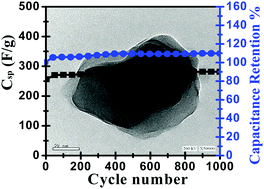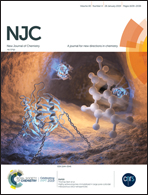Mesoporous ZnMoS4 as a supercapacitor electrode material with battery-like behavior
Abstract
This paper reports the successful synthesis of bimetallic sulfide ZnMoS4 (ZMS) using a solvothermal method. The structural and morphological properties of ZMS were identified using several characterization methodologies. ZMS material was produced in a sheet-like morphology with a mesoporous structure and its supercapacitive performance was examined. CV and GCD measurements confirmed that ZMS is capable of storing electrical energy showing a battery-like behavior which is expected to proceed via K+ ion intercalation/de-intercalation within the layered matrix of ZMS. Upon raising the current density from 0.7 to 10 A g−1, its specific capacitance slightly decreased from 280 F g−1 to 243 F g−1, maintaining 86.79% of its initial capacitance, which indicates that the ZnMoS4 compound has a high-rate capability. In addition, the ZMS electrode displays excellent long-term stability preserving a capacitance retention of ∼110% even after 1000 cycles, which is likely attributed to the enhanced diffusion of electrolyte ions within the electrode active material as inferred from EIS measurements.



 Please wait while we load your content...
Please wait while we load your content...